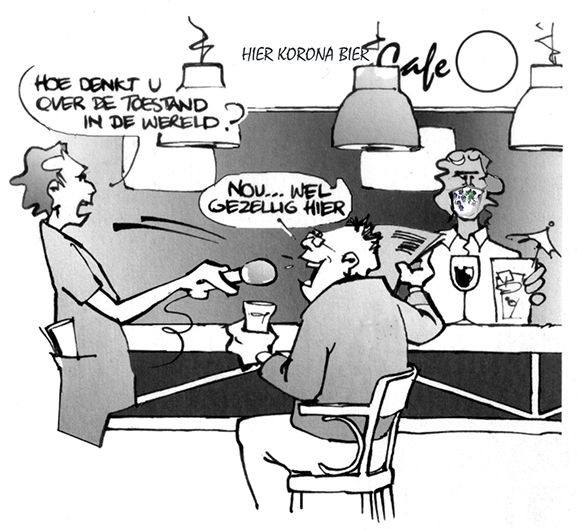Tourists normally enter Curaçao by the dozens in July. It is summer vacation in the Netherlands. According to the e-card administration on Hato, five thousand ditches arrive this month. And if you include the other nationalities and the cruise passengers on the Megapier, you come to about 110,000 paying holidaymakers, who enjoy sun, sea, beach and culture every month. The funny thing is that although we import those sun worshipers, they are on the export side’s balance sheet. They bring dollars and euros into the drawer. Only not this year. You know why…
I am an active promoter of Curaçao. That is due to my love-hate relationship with the island. In my work I like to tell about both, but I am regularly urged to keep the ugly things of the island away from the public; you do not air your dirty laundry.
Curaçao is an island of extremes. Anyone who travels from Hato airport to Punda and crosses the Juliana Bridge will see that in a nutshell: on the right the beauty of the Handelskade and the open blue sea, on the left the ugliness of the Isla refinery and its black soot emitting and flaming pipes.
After the riots of late June I discovered once again that people do not like the negative aspects of our island to be shared with the outside world. Angry garbage collectors marched with troubled citizens towards Fort Amsterdam, after which Willemstad briefly became the setting for the protest 51 years ago on May 30, 1969.
“Bad for our image” was quickly shouted. Just like the dramatic consequences of the corona crisis, as a result of which tourism completely collapsed and catering companies, one after the other, died. When I asked Pietermaai’s entrepreneurs about this, it soon became clear to me that they were not waiting for a story about all that misery. Their response: “We are not proud of it and would rather keep it quiet. It is also not conducive to the restart of tourism for the district and the island. Agree?”
My answer can be guessed. Compassion and understanding are keywords for recovery. It is not without exception that people and companies give support to the people about whom I write. The audience is not stupid, they recognize both sides of the coin and reward an honest story.
The day after the borders reopened, an old tourist said to a Dutch newspaper: When we are on holiday here, we also eat here. We help people with that. You help them always by having holidays here.”
Misery and cheerfulness, like hate and love often go hand in hand. That is why I tell the story as it is and as it develops. Fair stories must lure the tourists again. I call that export-promoting stories.

